Haknpoints: Offensive Concepts

"Every football team eventually arrives at a lead play: a "Number 1" play, a "bread and butter" play. It is the play that the team knows it must make go, and the one its opponents know they must stop. Continued success with it, of course, makes your Number 1 play, because from that success stems your own team's confidence." –Vince Lombardi
As we discuss coaching candidates we'll invariably get into the same old discussions on what kind of base offense said candidate might want to run. There was some discussion on the board this week and I wanted to expand that discussion into some basic "Rock" plays of various offensive schemes.
It is incorrect to identify any one play (and even more incorrect to identify a specific formation or personnel group) as a complete offense. You always need counters to keep doing the thing you do, and the counters will often borrow directly from some other offensive concept's rock. All offenses will borrow from each other so no breakdown is going to describe more than 60% of any given offense. Most zone blocking offenses throw in man-blocked things (example: inverted veer) to screw with the defense. You can run most of these out of lots of different formations. You can package counters into almost all of them (example: The Borges's Manbubble added a bubble screen to inside manball).
Really what you're describing when you talk about any offense is the thing they do so well that they can do it for 5 or 6 YPP all day long unless defenses do something unsound to stop it (like play man-to-man, or blitz guys out of coverage, etc.). Some examples of offenses and their formation needs (where a need isn't specified, figure they can use any set or formation: spread, tight, 23, ace whatever). I've given the rock plays, and left out the counters and counters to the counters because that gets into way too many variants.
Finally, the terms "pro style" and "spread" are meaningless distinctions. NFL offenses have the luxury of getting super complex: they have passing game coordinators who teach the QBs and WRs Air Raid things then run zone or power blocked things. The spread refers to formations and personnel—it doesn't say anything about whether the QB runs, if it's an option offense, or what tempo it runs at, or even what kind of blocking it uses. What I've done here is break up the offenses into "QB as Run Threat" and "QB Doesn't Have to Run" since the construction of these base plays usually stems from that. Remember, however, that QB running offenses can (and often do) still use blocking right out of Vince Lombardi's favorite play.
QB as Run Threat Offenses:
Triple Option
The FB dive will hit too quickly for anyone but the DE to stop; once the DE bites, the RG moves down to the second level while the QB keeps and heads outside, with the RB in a pitch relationship to defeat the unblocked defender there.
Concept: QB makes a hand-off read then a pitch read.
Makes life especially hard on: Edge defenders who have to string out plays against multiple blockers and maintain discipline.
Formation needs: Two backs.
Helpful skills: QB who can consistently make multiple reads and won't fumble, highly experienced, agile OL, backs who can both run and bock.
Mortal enemy: The Steel Curtain. Stopping the triple option is a team effort; if everybody is capable of defeating blocks, challenging ball-carriers, and swarming to the pitch man there's nowhere to attack.
Examples: Air Force, Nevada, Georgia Tech, Bo's Michigan
[Hit the jump for ZR, QB power, Air Raid, West Coast, Manball, Inside Zone, and the Power Sweep].
Zone Read
The pre-snap read to a bubble screen is just one way to keep that defender from squeezing the QB's running lane.
Concept: QB reads a backside defender to hand off if that dude holds up, or keeps if that defender bites on the RB.
Makes life especially hard on: Safeties who have to add being a primary tackler to their other responsibilities.
Formation needs: Shotgun/Pistol
Helpful skills: Lives and dies with the right QB who can make the right reads, is a dangerous runner, and dangerous enough passer that the safeties have to stay back. Jitterbug slot-backs and running backs to punish defenses who pack the box. Receivers who can block to keep the CBs from interfering.
Mortal enemy: Alan Page. The read takes out one defender, freeing up an extra OL to people the point of attack. If the point of attack is being de-peopled by an unblockable purple people eater, that advantage is lost.
Examples: West Virginia under RR, Ohio State, Oregon
Wildcat/QB Power
In this example the RG is pulling; this can be run with power or zone blocking.
Concept: QB is primary runner, RB becomes extra blocker
Makes life especially hard on: Second-level defenders who come up at the risk of getting pop-passed over.
Helpful skills: Super-duper quarterback who's a major run threat and can still pass well enough to threaten that, great blocking RB and WRs, athletic slot receiver who can challenge in space and get open downfield.
Mortal enemy: Troy Polamalu. I could go with lots of great safeties who make their living in the box, but chose Pola because he doesn't: he'll be in coverage until the nanosecond he reads run, and then there he is, and then there your quarterback isn't.
Formation needs: Shotgun/Pistol, Spread
Examples: Michigan 2010 (QB power), Darren McFadden-era Arkansas (Wildcat), Mad Magicians
Pro Style (QB Doesn't Have to Run) Offenses:
Air Raid
If that MLB is backing out of the box, you can delayed handoff and run six-on-five. The Y and X receivers are running Mesh routes, the H receiver is running a stick. Blue is the regular route, and the red are stems the receivers can break off against zone coverage. The Z's job is to release outside so that CB's hips get turned away from the play.
Concept: WRs stretch defense and stem long routes based on coverage, often with packaged run plays. Stick routes drag man DBs or curl into spaces zone isn't covering. Mesh routes rub off man coverage, break off in zone holes. Packaged run keeps defense honest so you can really just have variations on that one play all day.
Makes life especially hard on: Interior linebackers, who have to run all over the place to disguise their coverages and have their decisions read to make them wrong no matter what they do.
Formation needs: Shotgun/Pistol, Spread (often spread the OL too).
Helpful skills: Smart and experienced receivers/TEs and QBs who can read defenses and make lightning quick decisions. Accurate QB who can make all the throws.
Mortal enemy: Earl Thomas, the epitome of the "rangy" safety. If all of centerfield is a no-fly zone, there's nowhere to stem to, and linebackers can concentrate on the run and short zones.
Examples: Texas Tech under Mike Leach, West Virginia under Holgo, Mike Marz/Scott Linehan, Bob Stitt.
West Coast Offense and Passing Spreads
If the LB is blitzing the QB throws it to the hot receiver. This example shows a bit of play-action with the OL.
Concept: Timed routes that stretch zones & check-downs, ball is gone before rush can arrive
Makes life especially hard on: Underneath coverage, who keep getting receivers at opposite edges of their zones.
Formation needs: At least two receivers
Helpful skills: Agile receivers who run excellent routes, smart and accurate QB, impenetrable left tackle, backs and TEs who can catch (the better to threaten runs)
Mortal enemy: Lawrence Taylor. An elite edge rusher who won't give the QB even two seconds of peace in the pocket is a recipe for bad reads and diminished QB efficiency.
Examples: Brian Kelly Notre Dame, the Bill Walsh coaching tree
Manball (Power-O & ISO)
If the guard (red) pulls it's Power O; if he just attacks downhill it's an ISO.
Concept: Quick-hitting and downhill rushing, with lots of dudes blasting holes at the point of attack.
Makes life especially hard on: Middle linebackers who have to make super-fast reads and not get beat up by missile blockers and backs running downhill
Formation needs: QB under center or pistol (so that RB has a running start). A FB or H-back helps.
Helpful skills: Big, tough, quick linemen who can blast their guys off the ball, a running back who can do the same and will get extra yards with momentum. Interior OL who can pull well. Dangerous 1-on-1 receivers to keep the safeties back.
Mortal enemy: Ray Lewis. Will blow up your blocks in the backfield, doesn't bite on play-action, and will stop the momentum of your RB on impact.
Examples (variation): Michigan, fergodsakes editions (power-O), Woody Hayes
Zone Running
Uncovered linemen (light blue) help their buds get their blocks, then head to the 2nd level. The Y will kick the SAM out to make the key hole; the RB usually then can pick whichever side the 5T didn't go.
Concept: Simple blocking punishes DL who try to get off blocks and can attack whatever hole opens up.
Makes life especially hard on: Middle linebackers who have to make super-fast reads and get to the holes clean before a blocker can peel off on them.
Formation needs: TE to the strongside helps.
Helpful skills: Agile, intelligent, experienced OL and RBs who can adjust to defenders on the fly, open up holes, and take advantage of them.
Mortal enemy: Michael Strahan. Ultra-responsible SDE/5-tech who can't be pushed off the ball and can play both sides of the key block.
Examples: Wisconsin, Alabama, Michigan State
Pin & Pull Running
The TE plays the strongside edge defender like a zone block: if he goes inside drive him down the line and the RB goes around; usually he'll go outside and the TE just seals him there so the RB can cut inside. The center calls the blocking based on the DL's alignment.
Concept: Stretch defense with speed and extra blockers at point of attack, run where the hole opens.
Makes life especially hard on: Edge defenders.
Formation needs: Tight end(s)
Helpful Skills: Great blocking TE. Quick/agile/ultra-experienced OL and RBs who can exploit opportunities as they open up.
Mortal enemy: DeMarcus Ware (college version: JMFR). The SAM (odd fronts) or SDE (even/over fronts) is matched on the TE right in the middle of where the action is. If that guy consistently gets penetration inside he can totally gum up the works.
Examples: Lombardi-era Green Bay.
They all have various advantages and disadvantages. The math of those works different for college and the NFL because most college programs have difficulty recruiting generally good players, so offenses that only emphasize certain characteristics are beneficial, and college coaches have way less time to teach their offenses.
The reason zone read offenses dominate college football is they are relatively easy to teach, and let you run a highly efficient running game from highly efficient passing formations. The reason downhill running offenses dominated college football in the '90s was national recruiting let a few power programs recruit generalists who could run roughshod over everyone but each other. That advantage hasn't disappeared, but spreads and zone reads make it possible to have just as good or better of an offense than the old power offenses had. Any of the above can work in college football if you have the right personnel and can teach it to them.
December 9th, 2014 at 2:24 PM ^
December 9th, 2014 at 2:38 PM ^
Did you happen to catch the body language of the running back icon in that inside zone diagram?!
Harbaugh is definitely coming to Michigan you guys.
December 9th, 2014 at 2:53 PM ^
This is an excellent write up Seth- very well done- I will bookmark it. Its nice to have a little football talk to give some relief from all the celebrity gossip that has taken over recently.
Unfortunately it will probably get few replies that are about its subject.
Just curious- given the personel that we have now- what would be the best fit of these styles? I know this is difficult because the QB is key and we don't know about that situation. But the other players will be able to do some things well and not others. Which system do they fit into best?
Thanks
December 9th, 2014 at 3:18 PM ^
As Seth said, none of these offenses are self-contained. Borges claimed he was a WCO guy, but that was only kind of true. He relied heavily on Air Raid concepts and obviously some Power O and Iso.
Nussmeier mixed Air Raid and Inside Zone concepts displayed here with some spread concepts in his past (the Nussmeier Air Raid was based on an earlier Air Raid similar to Erikson and John L Smith type, rather than the TTU Leech varient).
Michigan has receivers with kind of defined skills, which leads to the Air Raid varients, but not the Leech kind. Instead, it's something closer to the Bill O'Brien standard. Triangles mixed with some simple reads and scheme in route concepts to help receivers get seperation in combination with a between the tackles rushing attack. That's pretty much what Borges was building, so it makes sense that's what best fits the personnel. But I wouldn't necessarily narrow down the next offense to what a previous OC was trying to build, but just implement some of those schemes within the nominal offense.
FWIW (and Seth said as much), the plays shown above could be considered base plays of those offenses (the rock), but many of these plays or a close varient are included in pretty much all current offenses (triangles, mesh, one back power, Power O, and varients of the other things depending on base offense).
December 9th, 2014 at 4:26 PM ^
I know that there is this idea of being prospective rather than retrospective but I am interested in learning about football regardless of who Michigans next coach might be. I would love to read some in depth stuff about what Nuss was trying to do because I just don't see the big picture with him.
He seemed so risk averse, with regards to sacks and negative plays, that his only option was to try to inch down the field in these 15 play drives that required perfect execution in tight windows. And if that didn't work, his only recourse was to keep practicing until it did work. We have no idea if he would have loosened up if it did work because it literally never did.
Even when the running game was working and the pass protection was decent, the offense was only marginally more efficient because nothing, especially in the passing game, was ever easy or ever had the chance to gain a lot of yards. Even on the rare occassion when Michigan would do something unexpected the defense never seemed to be fooled. Take for example, the second play of the OSU game--2nd and short a sure running down. They passed and the only person who looked confused was Gardner. On the second play of the game Gardner was confused.
I understand the various pieces that Nuss was working with but don't see how they were supposed to fit into a functional offense because even when it worked it didn't work.
December 9th, 2014 at 4:33 PM ^
I didn't devulge a ton because it was something I wrote for HTTV.
If you have the 2014 HTTV, that still pretty well describes the Nussmeier passing offense. He wanted to stretch the field horizontally with a lot of crossing routes and then vertically with quick breaking posts, corners, etc. That puts an emphasis on a run game and receivers that can "out-athlete" the coverage to a degree.
The run game I talked in depth about here.
December 10th, 2014 at 1:02 PM ^
As always, thanks for your input. It seems to me that Nuss was hired for his expertise in the running game where he acquited himself quite well. It is also becoming increasingly clear to me that he lost his job because of his passing game. I am sure it looks awesome on paper and works super well if the team is either extremely experienced and smart or can routinely out-athlete the opponent.
To me, however, it seems way too complicated to be consistent in college and requires too many moving parts for not enough pay off. If tolmichfan is correct about the specific play that I referenced, and I assume he is, then the consequences of everyone not being on the same page are pretty dire. And yet, when everything finally does come together on any given play all you have is the prettiest 7 yard curl ever and not 7 points.
I am also confused by Nuss' aversion to longer passes which he never waivered from all season. You suggest, and I am sure that you are right, that Nuss would have worked in longer stuff once all the shorter stuff was working. Which strikes me as quite a bit too late and pointlessly so.
December 9th, 2014 at 4:47 PM ^
December 9th, 2014 at 6:04 PM ^
I see more and more amalgams of offense off of one of these based, and the true ideologues getting crowded out or mutated. State does just fine with their pro set base.
The really good coordinators have offenses that fit their talent and that EXECUTE; and assistants that develop talent. IMHO if our O line executed and the staff was able to pass on its knowledge effectively to Gardner and his wideouts we aren't here now.
December 9th, 2014 at 3:04 PM ^
Nice overview, sir.
FWIW, I would point out the obvious problem with "Manball" in this day and age: numbers. Have we learned nothing since Stanford taught us in the Rose Bowl 40 years ago that 8 or even 9 in the box is almost impossible to overcome (except with athletes like Alabama has, and not always even then)?
December 9th, 2014 at 3:37 PM ^
Bo played Manbawl very well after Carter demonstrated what a passing game could do, causing him to dump the triple option (as emphasised most clearly when choosing between Michael Taylor and Demetrious Brown).
December 9th, 2014 at 3:13 PM ^
GREAT stuff. Such that I'm commenting prior fully digesting the material.
December 9th, 2014 at 3:48 PM ^
was for Michigan in so many Rose Bowls
only I remember it being called "Student Body Right."
December 9th, 2014 at 4:06 PM ^
Nicely done as always Seth... and what a bonus to hear Lombardi describe the classic Packer sweep.
December 9th, 2014 at 4:06 PM ^
Now back to analyzing Jim Harbaugh's socks during his last press conference. They were gold toed blue socks. YELLOW AND BLUE IT'S A SIGN IT'S HAPPENING!!!!
Sent from MGoBlog HD for iPhone & iPad
December 9th, 2014 at 4:40 PM ^
and Harbaugh to you, too.
December 9th, 2014 at 5:22 PM ^
Air Force doesn't really run the true triple optionall the time. They actually use some shotgun formations and throw out of them. Nevada runs the Pistol.
Navy does run the triple option, as does Army. Those would have been better examples.
Zone Read is pretty much correct, but doesn't RR still run that at Arizona? Also I believe Northwestern with Coulter and Nebraska with Martinez are examples there. I want to say Todd Graham runs that as well.
Pop Pass was also run with Tebow to a tee. He play-actioned to himself.
Leach still runs the Air Raid at Wazzou. Holgorsen is correct. TX Tech I believe under Kingsbury still runs it, too. Houston has traditionally been Air Raid.
Stanford. Manball.
December 9th, 2014 at 6:11 PM ^
December 9th, 2014 at 7:31 PM ^
Things make more sense now.
December 10th, 2014 at 5:43 AM ^
In a gap (PWR) scheme, the front will block back, leaving the front side end free, thus allowing the backside guard to pull for a kick out or log.
In ISO, most teams will combo the C and backside G from near down DL, to backside LB.
December 10th, 2014 at 10:44 AM ^
One of the things I think I get from this is that QB power and Air Raid look so similar at the setup, that a defense would have trouble identifying the two until the play started. If you could easilly mix in plays from both, it would make things difficult. The difference maker seems to be the quarter back. He would have to both have a strong arm and accuracy AND make good reads and perform athletic runs. That's pretty rare.
December 11th, 2014 at 9:47 AM ^
Any discussion of offensive philosophy has to take into account the GREAT differences between the NFL & all the others in regards to hash placement.
NFL has 18' between the hashmarks, which allows a D to line up symmetrical against you without tipping what they are going to do.
NCAA & high school football have similar hash mark placement(40' & 50' approx.) which means a D has to account for the "long" side of the field on every play. This is why the no huddle/stand there and look to the sideline works so well at those levels, along with the zone read stuff, triple option stuff and various other "schemes" that are rendered almost useless in the NFL.
This is why college QB's that are successfull often flounder at the NFL level. They have to make subtle reads themselves and cannot rely on stomping their foot and looking to the sideline for instructions.
December 13th, 2014 at 11:34 AM ^
Terrific graphics - ? drawn using a football diagramming package or just a vanilla drawing program?
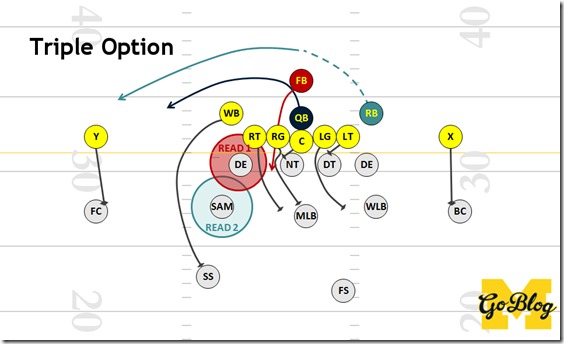
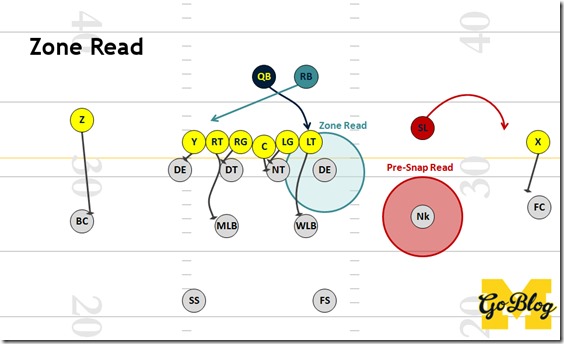
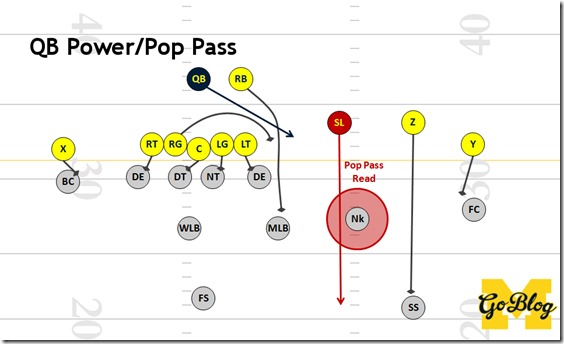
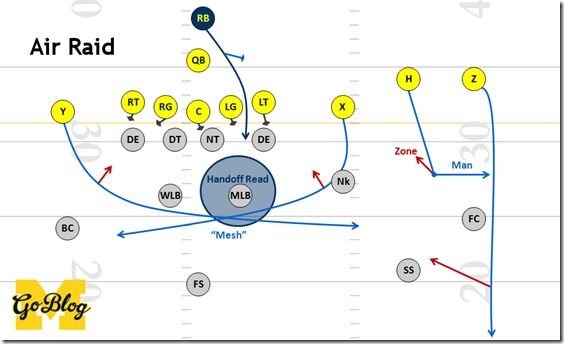
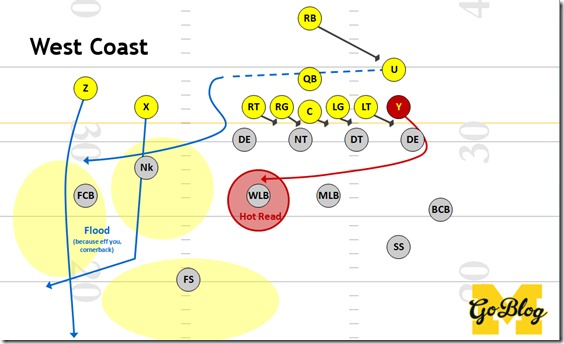

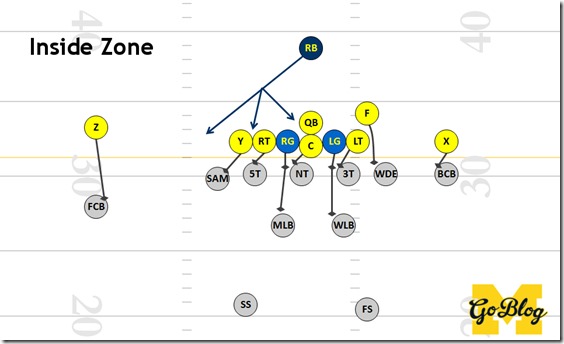
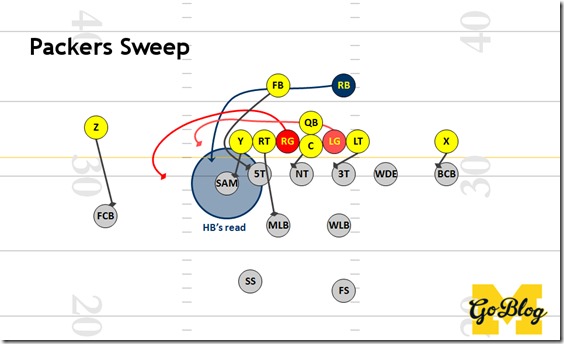
Comments